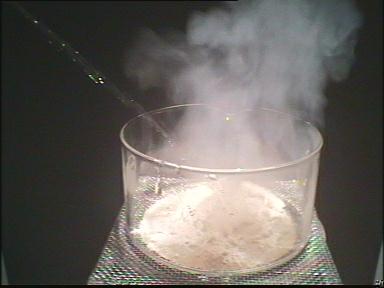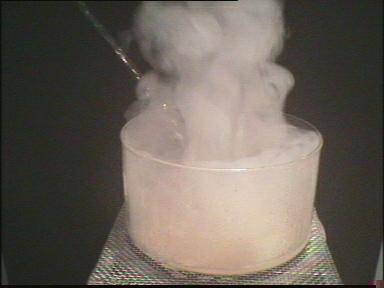



| 1. |  |
2. |  |
| Phosphorous pentoxide (white) is placed in a crucible | Water is squirted in. A strong reaction takes place | ||
| 3. |  |
4. |  |
| The reaction is highly exothermic. Water vapor forms | An indicator is added. The resulting solution tests acidic |
| Photo1: | Experimental setup: 10 g phosphorous pentoxide (P2O5) is placed in a crucible. |
| Photo2: | Adding water causes a strong reaction. |
| Photo3: | The reaction is so strongly exothermic that a part of the water added evaporates immediately. |
| Photo4: | Adding a universal indicator shows that the resulting solution is acidic.
An important property of phosphorous pentoxide, which normally exists as dimeric (P4O10) , is its high reactivity to water. The reaction produces first the intermediate product metaphosphoric acid, then polyphosphoric acid, and then finally the end product ortophosphoric acid (H3PO4): P4O10 Phosphorous pentoxide is one of the strongest dehydrating agents, which is why it is used as a drying agent or for removing water from chemical bonds. |